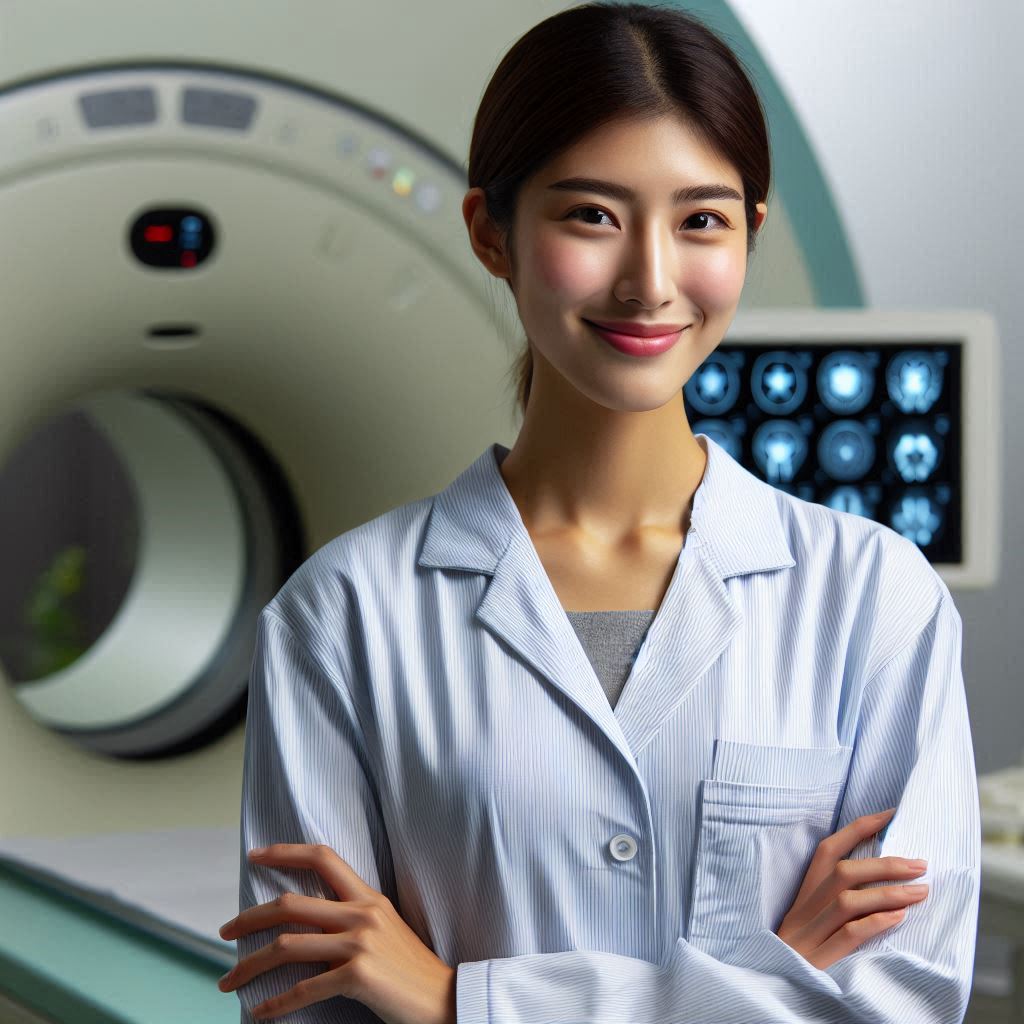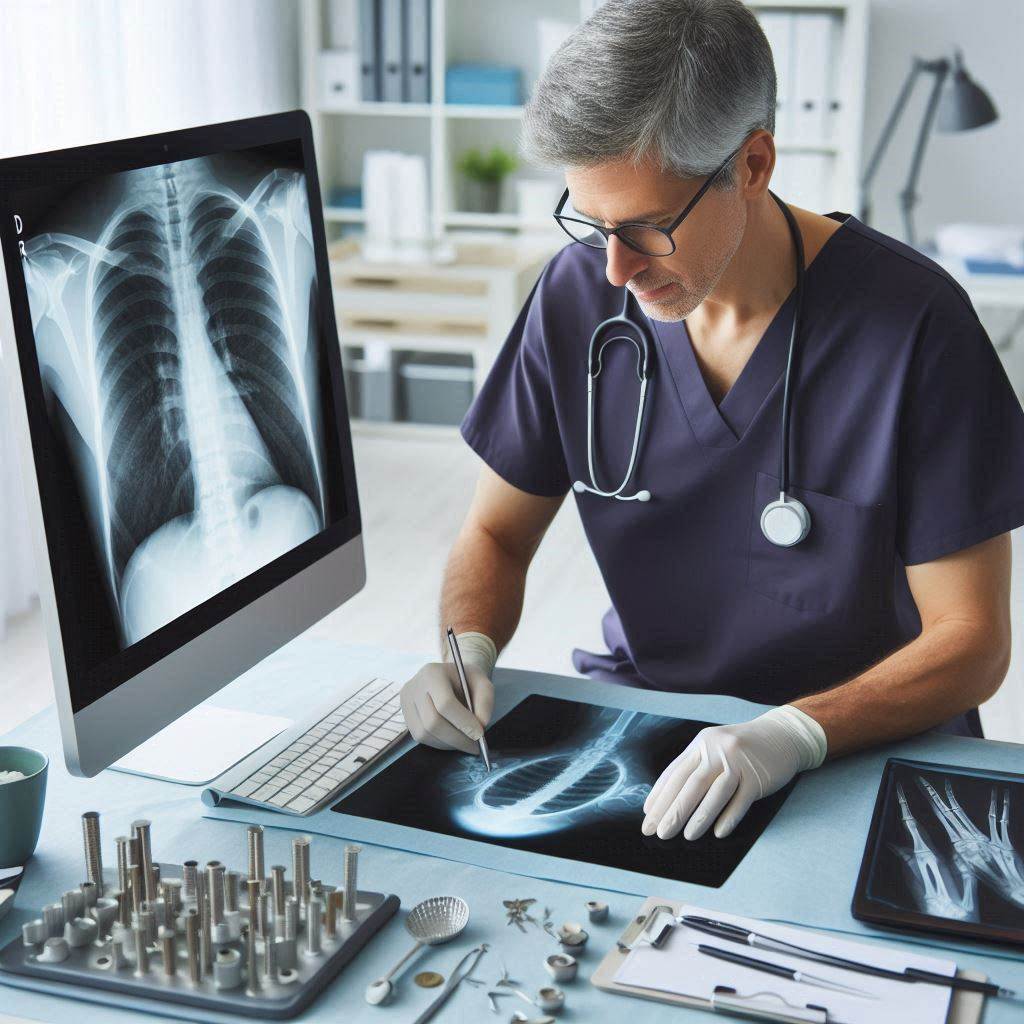Introduction
Nuclear medicine procedures involve the use of radioactive tracers to diagnose and treat various medical conditions.
It is a specialized branch of medical imaging that provides valuable information about the functioning of organs and tissues in the body.
Understanding these procedures is crucial for patients as it helps them to be informed about the purpose, risks, and benefits of the tests they may undergo.
It enables patients to actively participate in their healthcare decisions and feel more confident during the process.
Patients can also gain a better understanding of the results of nuclear medicine scans, making it easier for them to comprehend their diagnosis and treatment plan.
Being knowledgeable about these procedures can alleviate anxiety and uncertainty, leading to a more positive overall experience.
By educating themselves about nuclear medicine procedures, patients can ask pertinent questions to their healthcare providers, seek clarification on any concerns, and ensure they receive appropriate care.
This empowerment can lead to better outcomes and improved patient satisfaction.
In essence, having a comprehensive understanding of nuclear medicine procedures is essential for patients to navigate through their healthcare journey effectively.
It enables them to be proactive about their health, make informed decisions, and feel more confident and in control throughout the process.
What is nuclear medicine?
Nuclear medicine is a branch of medical imaging that uses small amounts of radioactive material to diagnose and treat a variety of diseases.
What nuclear medicine is
- Explanation of nuclear medicine: In nuclear medicine procedures, a radioactive tracer is administered to the patient either orally, intravenously, or by inhalation.
This tracer accumulates in the targeted area of the body, emitting gamma rays that are detected by a special camera. - Role in diagnosing and treating diseases: Nuclear medicine helps physicians visualize the structure and function of organs, tissues, and bones.
It is commonly used to detect cancer, heart conditions, neurological disorders, and bone abnormalities. - How nuclear medicine differs from other imaging techniques: Unlike X-rays, CT scans, and MRI, which provide anatomical images, nuclear medicine focuses on the metabolic activity of cells and tissues.
This allows for early detection of diseases based on cellular dysfunction.
Nuclear medicine procedures performed by trained professionals in specialized medical facilities.
Nuclear medicine procedures are safe and effective when performed by trained professionals in specialized medical facilities.
- Safety of nuclear medicine procedures: The amount of radiation exposure from a nuclear medicine scan is generally minimal and poses no significant risk to the patient.
The benefits of accurate diagnosis and treatment outweigh the potential side effects. - Effectiveness of nuclear medicine in diagnosis and treatment: Nuclear medicine can detect abnormalities at the cellular level, making it a valuable tool in diagnosing conditions that may not be visible on other imaging tests.
It also helps monitor the response to treatment and assess disease progression. - Training and certification of nuclear medicine technologists: Technologists who perform nuclear medicine procedures undergo extensive training to ensure the safe and accurate administration of radioactive tracers.
They are required to maintain certification through continuing education and quality assurance programs.
Role in modern healthcare
Nuclear medicine plays a crucial role in modern healthcare by providing valuable diagnostic information and guiding treatment decisions for a wide range of medical conditions.
- Impact of nuclear medicine on patient care: By accurately diagnosing diseases at an early stage, nuclear medicine can improve patient outcomes and quality of life.
It helps tailor treatment plans to individual needs and monitor the effectiveness of therapy over time. - Research and development in nuclear medicine: Ongoing advancements in nuclear medicine technology and imaging techniques continue to expand its clinical applications.
Researchers are exploring new radiopharmaceuticals and targets for personalized medicine and precision oncology. - Collaboration with other medical specialties: Nuclear medicine professionals work closely with clinicians, radiologists, oncologists, and other healthcare providers to ensure comprehensive patient care.
Multidisciplinary teams collaborate to integrate nuclear medicine findings into treatment planning and ongoing management of complex diseases.
Read: Legal and Ethical Issues in Substance Abuse Counseling
Common Nuclear Medicine Procedures
Nuclear medicine procedures are commonly used in the diagnosis and treatment of various medical conditions.
These procedures involve the use of radioactive substances to visualize and evaluate different parts of the body.
Types of Procedures commonly performed in nuclear medicine
- Positron Emission Tomography (PET) Scan: PET scans are used to detect abnormalities in the body, such as cancer and heart disease.
- Single Photon Emission Computed Tomography (SPECT) Scan: SPECT scans are used to analyze organ function and diagnose conditions like heart disease and brain disorders.
- Bone Scintigraphy: This procedure is used to detect bone abnormalities, such as fractures, infections, and tumors.
- Thyroid Uptake and Scan: This procedure is used to evaluate thyroid function and detect conditions like hyperthyroidism and thyroid cancer.
- Renal Scintigraphy: Renal scans are used to assess kidney function and detect abnormalities in the kidneys, such as blockages or tumors.
Examples of conditions that may require nuclear medicine
- Cancer: Nuclear medicine procedures are often used to diagnose and stage different types of cancer, such as lung cancer and breast cancer.
- Heart Disease: Nuclear imaging can help evaluate blood flow to the heart and identify coronary artery disease and other heart conditions.
- Neurological Disorders: Conditions like Alzheimer’s disease and epilepsy can be diagnosed and managed using nuclear medicine techniques.
- Thyroid Disorders: Nuclear scans are commonly used to assess thyroid function and detect conditions like hypothyroidism and thyroid nodules.
- Bone and Joint Disorders: Nuclear imaging can help diagnose fractures, infections, arthritis, and other bone and joint problems.
Overall, nuclear medicine procedures play a vital role in modern healthcare by providing valuable information for the diagnosis and treatment of a wide range of medical conditions.
These procedures are safe and effective when performed by trained professionals in specialized nuclear medicine facilities.
Read: Orthopedic Technologist: Essential Patient Care Tips
Preparation for nuclear medicine procedures
Steps patients need to take before undergoing a nuclear medicine procedure
Before a nuclear medicine procedure, patients must follow specific steps. These steps ensure result accuracy and safety during the process.
Transform Your Career Today
Unlock a personalized career strategy that drives real results. Get tailored advice and a roadmap designed just for you.
Start Now- Follow instructions provided by healthcare provider
- Provide a detailed medical history
- Inform the healthcare provider of any allergies
- Discuss medications being taken with the healthcare provider
- Avoid eating or drinking for a specified period before the procedure
- Wear comfortable clothing and remove any metallic items
- Stay hydrated and use the restroom before the procedure
Importance of following instructions for accurate results
Adhering to the preparatory steps for a nuclear medicine procedure is crucial for obtaining accurate results.
Failure to follow the instructions provided by healthcare providers can lead to skewed outcomes and potential risks during the procedure.
Accuracy: Following the specified steps ensures that the imaging obtained during the procedure is precise and reliable, aiding in the diagnosis and treatment of various medical conditions.
Safe administration: Preparing adequately for a nuclear medicine procedure guarantees the patient’s safety during the process.
It minimizes the risk of adverse reactions and complications that may arise from improper preparation.
Efficient evaluation: By following the instructions provided, healthcare providers can assess the results of the nuclear medicine procedure more efficiently.
This enables them to make informed decisions regarding the patient’s care and treatment plan.
Optimal outcomes: Accurate results obtained from a well-prepared nuclear medicine procedure lead to better outcomes for the patient.
It facilitates the formulation of effective treatment strategies and improves overall healthcare management.
Overall, preparing for a nuclear medicine procedure is essential for ensuring the accuracy of results, the safety of the patient, efficient evaluation by healthcare providers, and optimal outcomes in patient care and treatment.
Read: Advanced Training Options for Substance Abuse Counselors

What to expect during the procedure
When undergoing a nuclear medicine procedure, it is important to understand what to expect during the process.
Here is a detailed description of the procedure and any associated risks:
Description of the procedure and how it is performed
- The first step in a nuclear medicine procedure is the injection or ingestion of a radioactive tracer.
- This tracer is absorbed by the body and can be detected by a special camera that captures images.
- Depending on the type of procedure, the tracer may be injected into a vein, swallowed, or inhaled.
- Once the tracer is administered, you will be asked to lie still on a table while the images are taken.
- The scanning process can take anywhere from a few minutes to several hours, depending on the area being examined.
- During the scan, the camera will rotate around you to capture images from different angles.
- After the images are obtained, a radiologist will interpret the results and provide a report to your doctor.
Potential side effects or risks associated with nuclear medicine procedures
- While nuclear medicine procedures are generally safe, there are some potential risks and side effects to be aware of.
- One common side effect is a mild allergic reaction to the radioactive tracer, which can cause itching or hives.
- In rare cases, more serious allergic reactions can occur, such as difficulty breathing or swelling of the throat.
- There is also a slight risk of radiation exposure during nuclear medicine procedures, but the amount is typically low.
- It is important to inform your healthcare provider if you are pregnant or breastfeeding, as some procedures may not be safe.
- Patients with kidney or liver problems may be at higher risk for complications from nuclear medicine procedures.
- If you have any concerns or questions about the risks associated with a nuclear medicine procedure, be sure to discuss them with your doctor.
Overall, understanding what to expect during a nuclear medicine procedure can help alleviate any anxiety or uncertainty you may have.
By following the guidance of your healthcare provider and being aware of potential risks, you can ensure a safe and successful experience.
Read: Importance of Substance Abuse Counselors in Healthcare
Aftercare and follow-up
After undergoing a nuclear medicine procedure, it is important to follow specific post-procedure care instructions to ensure a successful recovery.
Information on post-procedure care
- Drink plenty of water to help flush out the radioactive material from your body.
- Rest and avoid strenuous activities for the recommended period of time.
- Follow any dietary restrictions provided by your healthcare provider.
- Take any prescribed medications as directed.
- Monitor for any unusual symptoms and report them to your healthcare provider.
Recommendations for recovery
- Engage in light physical activity to help improve circulation and promote healing.
- Eat a well-balanced diet rich in nutrients to support your body’s recovery process.
- Get plenty of rest to allow your body to recuperate and regain strength.
- Avoid exposure to radiation sources and pregnant women or children for the recommended time.
Importance of follow-up appointments
Following a nuclear medicine procedure, it is crucial to attend all scheduled follow-up appointments to monitor your health and recovery progress.
Monitoring after a nuclear medicine procedure
- Regular follow-up appointments allow healthcare providers to assess the effectiveness of the procedure.
- Monitoring can help detect any complications or side effects early on for prompt intervention.
- Healthcare providers may recommend additional tests or treatments based on post-procedure monitoring results.
- Follow-up appointments provide an opportunity to discuss any concerns or questions with your healthcare provider.
By following post-procedure care instructions, recommendations for recovery, and attending all follow-up appointments, you can ensure a smooth and successful recovery from a nuclear medicine procedure.
Showcase Your Business Today
Reach thousands of readers actively exploring professional services. Publish your business profile and grow your audience now.
Publish NowSee Related Content: Benefits of Joining a Medical Coding Association
Find Out More: Nuclear Medicine Technologist Work Environment
Benefits and risks of nuclear medicine procedures
Nuclear medicine procedures have revolutionized the way diseases are diagnosed and treated, offering numerous benefits to patients.
However, they also come with potential risks and side effects that need to be considered.
Benefits of nuclear medicine in diagnosing and treating diseases
- Precision: Nuclear medicine allows for precise imaging of internal body structures and functions, enabling accurate diagnosis of various conditions.
- Early detection: By detecting diseases at an early stage, nuclear medicine procedures can help in timely intervention and treatment.
- Personalized treatment: Nuclear medicine techniques can tailor treatment plans to individual patients, ensuring optimal outcomes.
- Monitor treatment: Nuclear medicine can track the effectiveness of treatments and help healthcare providers adjust therapies as needed.
- Non-invasive: Many nuclear medicine procedures are non-invasive, reducing the need for more invasive diagnostic tests.
- Lesser side effects: Compared to traditional diagnostic methods, nuclear medicine procedures often have fewer side effects for patients.
Potential risks or side effects associated with exposure to radiation
- Radiation exposure: One of the main risks of nuclear medicine procedures is exposure to ionizing radiation, which can have long-term effects.
- Allergic reactions: Some patients may experience allergic reactions to the radioactive tracers used in nuclear medicine imaging.
- Risk of radiation sickness: In rare cases, high doses of radiation from nuclear medicine procedures can lead to radiation sickness.
- Radiation-induced cancer: Prolonged exposure to radiation from multiple nuclear medicine scans may increase the risk of developing cancer.
- Pregnancy risks: Pregnant women should avoid nuclear medicine procedures as radiation can harm the developing fetus.
- Organ damage: Excessive radiation exposure from nuclear medicine scans can potentially damage organs and tissues.
It is important for patients to weigh the benefits and risks of nuclear medicine procedures with their healthcare providers before undergoing any tests.
Healthcare professionals can help individuals make informed decisions based on their specific medical conditions and treatment needs.
Learn More: How to Transition from Medical Billing to Coding
Conclusion
When undergoing nuclear medicine procedures, it is essential to understand the process fully.
Key Points about Nuclear Medicine Procedures
Nuclear medicine uses small amounts of radioactive materials to diagnose and treat diseases.
These procedures are safe and effective when performed by trained professionals.
Patients may receive radioactive material through injection, ingestion, or inhalation.
Imaging tests like PET scans, bone scans, and thyroid scans are common nuclear medicine procedures.
Nuclear medicine helps physicians detect diseases at an early stage for better treatment options.
Patients should follow preparation instructions provided by their healthcare providers for accurate results.
Importance of Communication with Healthcare Providers
Clear communication with healthcare providers is crucial before, during, and after a nuclear medicine procedure.
Patients should inform their providers about any medical conditions, allergies, or medications they are taking.
Understanding the procedure and asking questions can help alleviate anxiety and improve the patient experience.
Healthcare providers rely on accurate information to tailor the procedure to each patient’s unique needs.
Follow-up appointments and discussions with providers can help patients understand the results of their nuclear medicine test.
Open communication ensures that patients receive the best possible care and outcomes from their procedure.
Understanding nuclear medicine procedures and maintaining open communication with healthcare providers are essential for a successful diagnostic or treatment process.
[E-Books for Sale]
The Big Book of 500 High-Paying Jobs in America: Unlock Your Earning Potential
$19.99 • 500 High-Paying Jobs • 330 pages
Explore 500 high-paying jobs in America and learn how to boost your career, earn more, and achieve success!
See All 500 High-Paying Jobs of this E-Book
1001 Professions Without a Degree: High-Paying American Jobs You Can Start Now
$19.99 • 1001 Professions Without a Degree • 174 pages
Discover 1001 high-paying jobs without a degree! Unlock career tips, skills, and success strategies for just $19.99!




